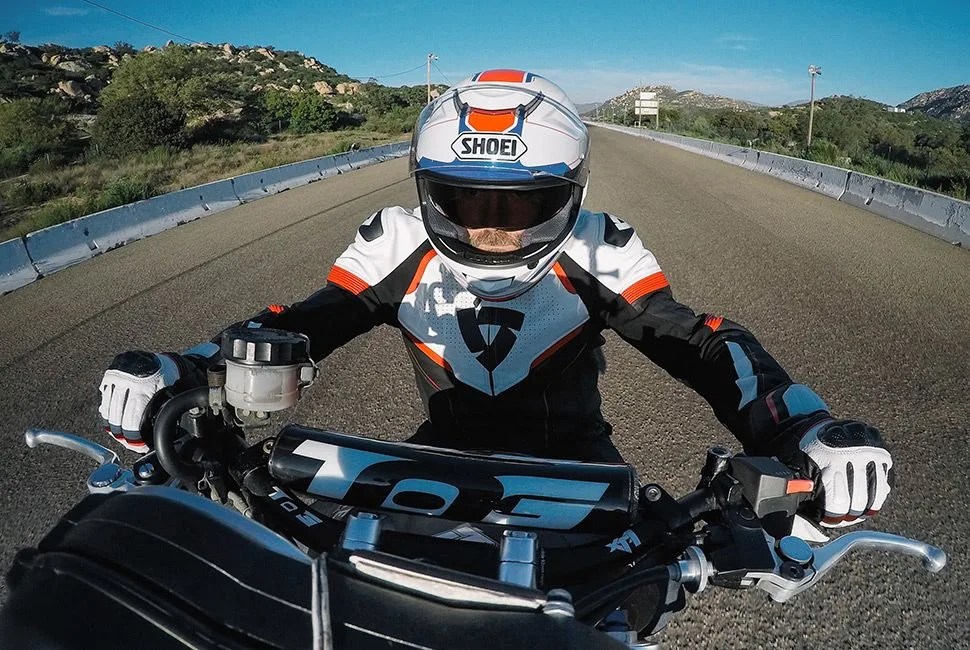I remember it like it was yesterday. I was seven years old, riding my BMX bike down one of the quieter streets near home. I was jumping curbs and skidding the rear tire around — cool-kid stuff — when I decided to up my game. I’d popped wheelies before but had never tried a catwalk. Today would be the day. One monstrous push on the pedals and a heave on the bars — soon after, I was laying on my ass, winded and embarrassed.
At 38 years old, with two decades in a motorized saddle, I find myself in a similar situation. Except this time I’m in San Diego, blipping the throttle of a 130-horsepower Triumph. And instead of giving things a go on my own, I’m being coached towards one-wheeled nirvana at Wheelie University by a fast-talking Californian with bright eyes and a permanent smile.
“The first rule we have here is that egos get left at the gate — this is education, not competition.” Eight sets of eyes dart around and the laughter of relief fills the staging area. Brian Steeves is the mind behind Wheelie University and he is utterly passionate about teaching riders the trick to getting “up on one” for their first time. The ultimate goal, a perfect balance-point wheelie, seems far fetched at this point, but it’s only 8:45 and we haven’t even suited up yet.
Before we do, Brian parks one of his specially prepared Speed Triple 1050’s on a tube-steel and loading-ramp hybrid he devised, known simply as the “the ramp.” The ramp locks both bike and rider in position at an approximate 45-degree angle and offers the leverage needed to have Brian manually pivot the entire apparatus to increased angles. He wants us to get used to the completely foreign feeling that comes with a balance-point wheelie. We each take a turn and every one of us fails the first test. We don’t relax our weight rearward enough. We pull our torsos towards the bars which, when not on the ramp, will take your front wheel from 12 o’clock to 3 o’clock in under a second. “Your eyes want to see the road ahead. That’s called self-preservation,” Brian quips. “I’m going to teach you to ignore that.” He’s right. It’s instinctual. Throughout the entire day at the track, I have to actively battle over 200,000 years of natural instinct to keep things sky high.

This is where Brian’s specially prepped bikes come in handy. Working with his proprietary Wheelie Height Control device, Brian can electronically limit launches so riders can progress at a comfortable pace. There’s even a physical trailing arm, a redundant system, that ensures no student ends up on their ass like seven-year-old me. By mitigating the consequences of an overzealous twist-grip, the fear of flipping is cast aside and riders can concentrate on learning the physical skills — calm throttle and hyper-sensitive rear brake control — as well as ignoring the will to live.
“Your eyes want to see the road ahead. That’s called self-preservation,” Brian quips. “I’m going to teach you to ignore that.”
